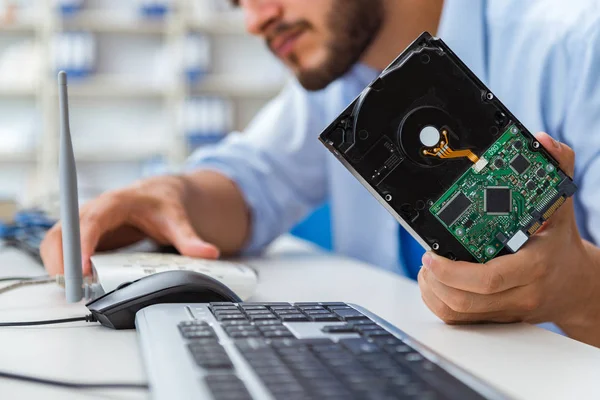Computers, like any other machines, experience issues from time to time. Whether you’re a san diego computer repair expert or a tech enthusiast, mastering the ability to identify warning signs and efficiently address them is essential for optimal system performance.
Sometimes the machine lets you know it’s having trouble by beeping, and a little listening can reveal even more problems. Other times, a dreaded Blue Screen of Death indicates a serious hardware problem that needs immediate attention.
Power-On Self-Test (POST) codes
The POST is the first set of diagnostic tests that your computer runs when you power it on. It checks that all of your system’s hardware elements are functioning properly. If it finds a problem, it will display or beep a code that lets you know where to begin troubleshooting.
You can also see a list of POST codes on your motherboard or BIOS maker’s website for help in understanding what the codes mean. Each code is a 2-digit hex code generated by the motherboard during POST and can be used to identify a particular piece of hardware.
For example, if the POST code is 0x7D, it indicates that the memory on the computer is bad. You can then remove the memory from the computer and try again to boot. Similarly, the POST code could indicate that the CMOS battery is dead, which would require replacing it to fix the problem. Other error codes indicate that the motherboard or its components are not working properly.
Blue Screen of Death (BSOD) errors
The dreaded blue screen of death (BSOD) is Windows’ way of telling you that something is seriously wrong with your computer. While it’s frustrating, it’s also a useful warning that you should shut down or restart your computer immediately.
BSOD errors are usually caused by a driver or piece of hardware. Unlike an app like Microsoft Word, a faulty driver is usually low-level and harder to diagnose.
Fortunately, it’s easier to troubleshoot a BSOD than you might think. Start by disconnecting all external devices except your mouse and keyboard (or wireless dongles). If you’ve recently installed new software, uninstall it and see if the BSOD recurs. Then, you can try a system restore to a date before the problem started. If that doesn’t work, a malware scan might help. If you’re comfortable opening up your computer, you can also check the motherboard’s BIOS to make sure it has the latest updates.
Error messages
The type of error message a computer gives its user depends on the operating system. Error messages may take the form of a dedicated light indicating an error condition, a short code that can be interpreted with a lookup sheet or manual, or a more detailed message displayed on a screen.
On a graphical user interface (GUI), error messages are typically presented as modal dialogs, which interrupt the computer’s operation and require that the user acknowledge the error message before continuing. The error message must provide enough information to help the user identify and fix the problem.
Error messages should avoid using technical terms or jargon that are difficult for non-technical users to understand. They should also not disclose any information that could be used by a malicious cracker to exploit the program or system. An example of a poor error message is “Unable to save file,” which does not tell the user why the save failed.
Memory errors
Memory errors are the result of noise, glitches or interference that disrupts data as it is stored in memory. This interference can be caused by electromagnetic radiation from electrical wiring, static, lightning or even electromagnetic interference from other devices within the computer itself. These errors can occur at the chip level or at the system level and are classified as Soft Errors or Hard Errors.
Soft errors are reversible, and can be fixed by restarting the system. However, if the error persists after a reboot, it is likely that it is a hard error that requires replacement of the affected module.
In some cases, memory errors can be corrected by using more conservative RAM timings in the BIOS or a different type of RAM module that is compatible with your motherboard. However, in many cases the best solution is to simply replace the affected modules with a set that has been tested and verified by your motherboard vendor as working well.
